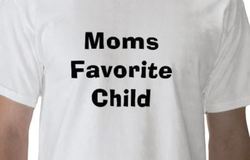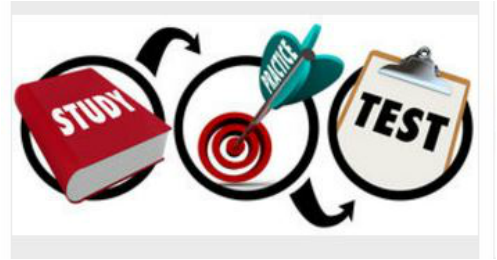|
https://www.scribd.com/document/343398987/Preparing-for-Life-After-High-School-VOL-2
These findings highlight some differences in the challenges that youth with an IEP faced in the decade after IDEA 2004, depending on their disability. Although the characteristics and experiences described capture only a subset of those discussed in this volume, prior research suggests that they could be important indicators of students’ later outcomes (see, for example, Mazzotti et al. [2016]; Zablocki & Krezmien [2012]). Youth in disability groups that are less likely to perform typical daily living tasks; engage with friends and in school activities; or prepare for college, careers, and independent living might be at higher risk for not making the kinds of postsecondary transitions that IDEA 2004 promotes.
0 Comments
The Condition of Education 2016 presents 43 key indicators on important topics and trends in U.S. education. These indicators focus on population characteristics, such as educational attainment and economic outcomes; participation in education at all levels; and several contextual aspects of education, including international comparisons, at both the elementary and secondary education level and the postsecondary education level.
https://www.scribd.com/doc/314107868/Highlights-2016-Condition-of-Education Students can use it to help them with reading comprehension. The way it works is easy: you paste your text, customize some of the tool’s settings and click on ’summarize’.
Smmry does the rest and provides you with a synopsis of the text containing few topic-focused sentences. The second application is an iPad app called Clipped and is especially ideal for news readers. Clipped summarizes long news articles into bullet points extracting unnecessary information and data leaving you only the gist of the story. Smmry SMMRY's mission is to provide an efficient manner of understanding text, which is done primarily by reducing the text to only the most important sentences. SMMRY accomplishes its mission by: • Ranking sentences by importance using the core algorithm. • Reorganizing the summary to focus on a topic; by selection of a keyword. • Removing transition phrases. • Removing unnecessary clauses. • Removing excessive examples.’ The study, published in the Journal of Child Neurology, is the first of its kind to link nighttime instant messaging habits of American teenagers to sleep health and school performance.
"We need to be aware that teenagers are using electronic devices excessively and have a unique physiology," says study author Xue Ming, professor of neuroscience and neurology at Rutgers New Jersey Medical School. "They tend to go to sleep late and get up late. When we go against that natural rhythm, students become less efficient." The American Academy of Pediatrics reports that media use among children of all ages is increasing exponentially; studies have found that children ages 8 to 18 use electronic devices approximately seven-and-a-half hours daily. Ming's research is part of a small but growing body of evidence on the negative effects of electronics on sleep and school performance. But few studies, Ming says, have focused specifically on instant messaging. "During the last few years I have noticed an increased use of smartphones by my patients with sleep problems," Ming says. "I wanted to isolate how messaging alone - especially after the lights are out - contributes to sleep-related problems and academic performance." To conduct her study, Ming distributed surveys to three New Jersey high schools - a suburban and an urban public school and a private school - and evaluated the 1,537 responses contrasting grades, sexes, messaging duration and whether the texting occurred before or after lights out. She found that students who turned off their devices or who messaged for less than 30 minutes after lights out performed significantly better in school than those who messaged for more than 30 minutes after lights out. Most students study by rereading their notes, PowerPoints, or books. The problem is that rereading is the most ineffective way of studying there is! Why? Because reading is visually taxing and is the hardest way in which the human brain learns information. Reading is also passive. It’s kind of like learning to play basketball while watching your coach play. It won’t work. Research shows that the number one way to study is to make a practice test. Try to predict what your teacher may have on the exam. Look at your study guide, pull out old quizzes, find important parts of your notes, and ask others in your class what they think is important. Then, create a practice exam.
GREAT RESOURCE https://quizlet.com/ Other Strategies Don’t cram. Instead, spread out three hours of studying over four days, 45 minutes per night. This works for two reasons. The first is that when you review the material multiple times you gain more familiarity with it. Secondly, and most importantly, sleep on it. That’s right, sleep helps you learn. Studies show that you remember more when you take 10-15 minutes to review what you studied or learned earlier in the day just before you go to sleep. This doesn’t mean that you should do all your studying just before bedtime, but it does mean that reviewing those notes again just a few minutes before bedtime allows you to process the information as you sleep. You will remember more on test day if you reviewed it more often and have those memories stored during your sleep. Thirty minutes of cardio a day, 4-5 days a week is an optimal strategy to improve learning. Aerobic exercise can improve focus as much as a low dose of a stimulant medication to treat ADHD. If you are a student athlete, study on the bus or the car as you travel home from an event. Consider studying right after practice, too. And if you don’t play a sport, run with your dog or shoot some hoops right before you sit down to do schoolwork. Most people need to sleep 7.5-9 hours per night in order to encode memories, but teenagers typically need more, about 9.25 hours. Thirty minute afternoon naps can help, because your brain actually goes into a sort of sleep pattern in the early afternoon. Be sure these afternoon siestas aren’t too long since extended naps can interfere with sleep at night. Breaks also help. In fact, studies show that students remember more when they have breaks between study sessions that when studying straight through for an extended period of time. Having downtime allows your brain to review information even when you don’t think you’re really processing it! Zackery doesn’t want others to end up like him. At 22, he walks with a looping gait, leaning heavily on a metal cane. He peers through thick glasses, specially designed to help his peripheral (side) vision. It takes him a moment to gather his thoughts before he speaks in a strained, thick voice. He struggles to remember his schedule day to day, and often relies on his mother to be his short-term memory schedule. Zack’s daily challenges stem from a traumatic brain injury he received while playing football when he was 13. In 2006, Zack nearly died after he got two concussions in a single football game, something called second impact syndrome. Although it’s not easy for him to get around, he’s spent the last 9 years speaking to lawmakers, coaches, athletic directors, trainers, health care workers, and parents about the dangers of concussions and what happens when they aren’t given time to heal. That’s why it was especially painful for Zack to watch the news about Kenney; the 17-year-old high school football player from Seattle who died earlier this month, 3 days after he received a head injury during a game. After his death, school officials revealed that Kenny, a wide receiver and defensive back, had suffered a concussion in September and had been cleared to play by health care professionals following the CDC’s guidelines. Had Zack sat out the rest of the game on Oct. 12, 2006, he most likely would be doing normal 22-year-old activities, like “out driving picking up chicks,” as he likes to joke. On that day, Zack suffered a concussion in the second quarter of the game when he made a tackle and hit the ground hard. He sat out for a while, but returned to the game in the second half. Zack took more hits but finished the game. As he walked off the field with his father, he collapsed and started to convulse. He was flown to Seattle’s Harborview Medical Center and came within an hour of dying from a catastrophic brain injury, says Richard G. Ellenbogen, MD, the hospital’s chief of neurological surgery.
Stress. It makes your heart pound, your breathing quicken and your forehead sweat. But while stress has been made into a public health enemy, new research suggests that stress may only be bad for you if you believe that to be the case. Psychologist Kelly McGonigal urges us to see stress as a positive, and introduces us to an unsung mechanism for stress reduction: reaching out to others.
Traumatic brain injury is the skeleton that the NFL has tried to keep in its closet for far too long. Now that's coming to light on the brightest stage possible. Will Smith's new movie Concussion will expose people who don't care about football to the plights of chronic traumatic encephalopathy, or CTE. Dr. Bennet Omalu, the former NFL and NCAA doctor who first identified chronic brain injury common factor in the deaths of several former NFL players, including Junior Seau following his death in 2012. The trailer presents the NFL as a dangerous syndicate working to discredit, disavow and coerce a doctor into hiding his research, while Omalu strives to present the truth.
 1. What are some things you feel you do well? Think about the talents you already know you have, and ask friends and family what they think you’re good at. You might be surprised by what they say. 2. What challenges you? The things that challenge you might be opportunities to improve and move toward your goals — and they might suggest areas of study and work that will keep you interested long into the future. 3. What do you like to do for fun? Think about the reasons you enjoy your favorite activities, the things they have in common and the strengths they bring out in you. 4. Who do you look up to? The people you admire — whether they’re celebrities, historical figures or people you know personally — can tell you something about who you are and what you value. Consider what it is about them you like and whether those qualities are worth reaching for. 5. What’s something you’ve always wanted to try? Consider your reasons for wanting to do this — and why it is you haven’t done this yet. Do you find it exciting? What do you expect to get out of it? 6. What accomplishment has made you most proud? Your answer might have nothing to do with a hard-won A or a trophy — it might be the time you stuck up for someone who needed your help. What you’re proud of can help you see what matters most to you. 7. What’s your favorite class? Don’t limit yourself to the subjects that come easiest to you. Think about which classes make you lose track of time. Is it the teacher or the subject matter that holds your interest? 8. What do you read about in your free time? The kinds of stories you follow in the news, your favorite books and websites — these can help you figure out what really makes you curious. 9. If you could do any job for a day, what would it be? Think about which careers you want to try on. What is it about them you find so appealing? What would you change to make them fit you better? 10. As a kid, what did you want to be when you grew up? Even if your childhood dreams seem silly now, remembering them may show you what’s always been important to you.  The study, published Friday in the Journal of Family Psychology, focused on siblings and academic achievement. Jensen and co-author Susan McHale from Penn State looked at 388 teenage first- and second-born siblings and their parents from 17 school districts in a northeastern state. The researchers asked the parents which sibling was better in school. The majority of parents thought that the firstborn was better, although on average; siblings' achievement was pretty similar. Parents' beliefs about sibling differences weren't influenced by past grades, but future grades by the teenagers were influenced by the parents' beliefs. The child parents believed was smarter tended to do better in the future. The child parents believed was less capable tended to do relatively poorer the next year. Specifically, that belief translated to a 0.21 difference in GPA among study participants. 'That may not sound like much,' Jensen said. 'But over time those small effects have the potential to turn into siblings who are quite different from one another.' |
Disclaimer: This website is for informational and educational purposes.
Any and all blog content represents a synthesis of empirical information found on the internet, of my own personal opinions, and my professional experiences. Nothing posted reflects or should be considered professional advice. Interaction with me via the blog does not constitute a professional or therapeutic relationship. For professional and customized advice, you should seek the services of a licensed mental healthcare professional. I do not assume liability for any portion or content of material on the blog and accept no liability for damage or injury resulting from your decision to interact with the website. Archives
October 2023
Categories
All
|







